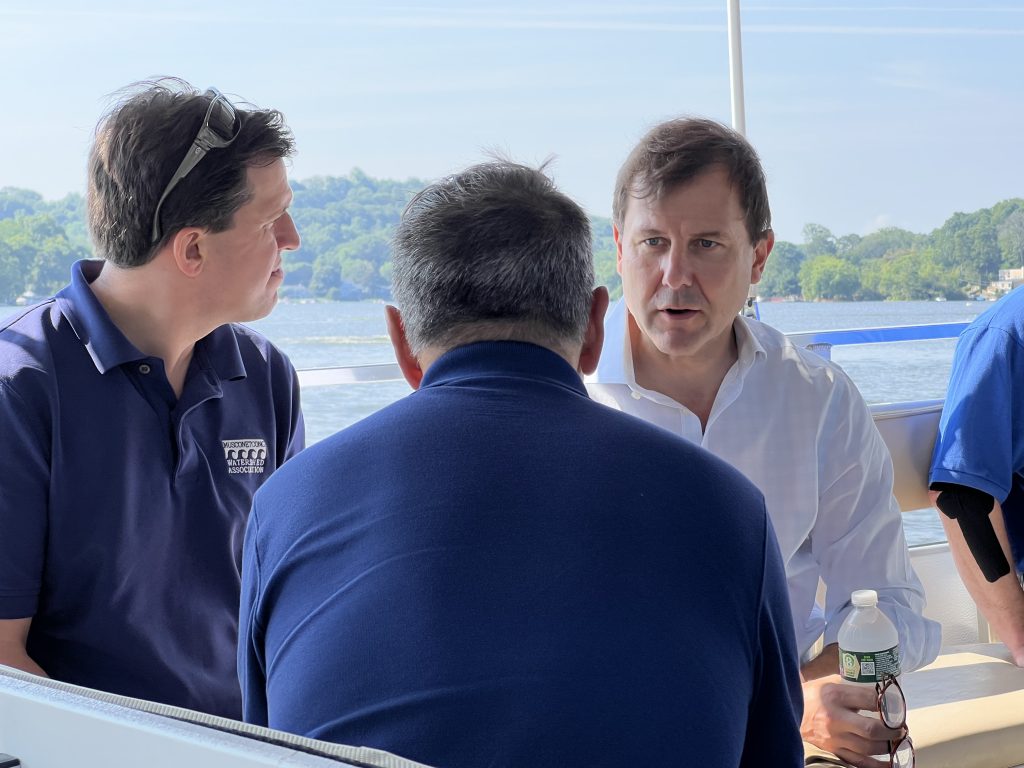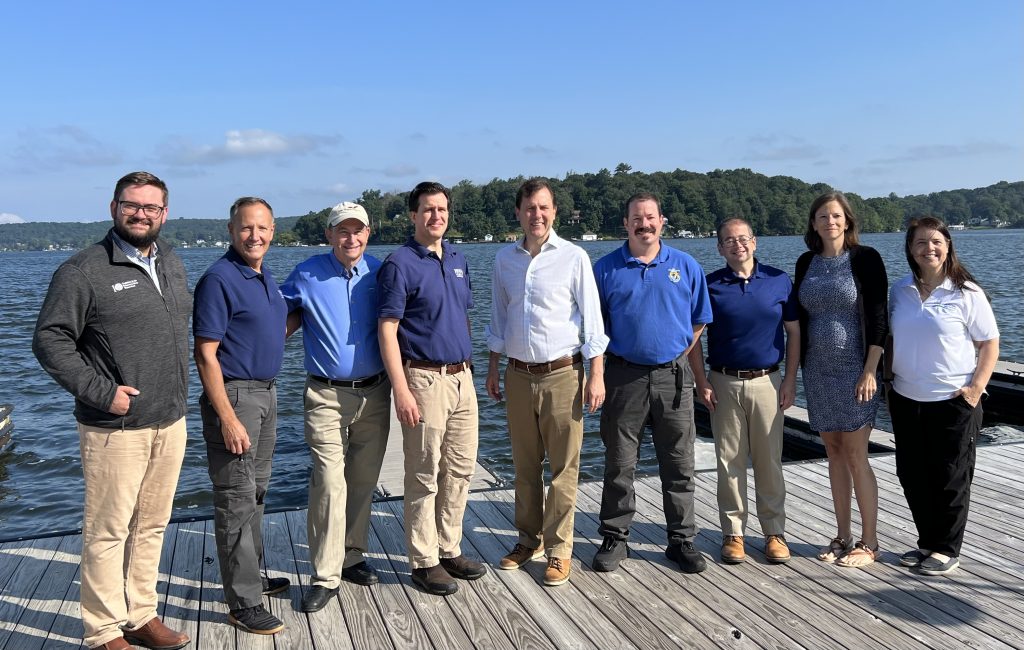
Lake Hopatcong welcomes environmental conversation
| August 15, 2023
A tour of New Jersey’s largest lake — Lake Hopatcong — this month brought together Congressman Tom Kean Jr. and a host of local, state and federal environmental organizations to emphasize the importance of federal and state investments in restoration projects throughout the congressman’s district.
His district leans against the Delaware River on the western edge of New Jersey and stretches down to Lambertville, across to Linden in the east and north to include Sparta and some of the Delaware Water Gap National Recreation Area.
Lake Hopatcong sits in the northern part of the district, and, as with many water bodies, it has its own watershed and is also part of the Musconetcong River watershed, which forms a diagonal slash across the district from northeast to southwest, where the Musconetcong joins the Delaware River, just across from Riegelsville, Pa.
So it’s not surprising that representatives from the Musconetcong Watershed Association were in attendance, as were officials from the Lake Hopatcong Foundation and the Lake Hopatcong Commission.
Both the lake and the river have been beneficiaries of the relatively new federal funding program — the Delaware Watershed Conservation Fund — which supports on-the-ground restoration and protection needs throughout the four-state basin.
That program is largely the reason that the Coalition for the Delaware River Watershed and the U.S. Fish and Wildlife Service were on board as well.
Much like watersheds that are nestled inside one another, the fund is part of an interconnecting weave that starts with money apportioned by Congress and in 2018, with that money, the U.S. Fish and Wildlife Service with the National Fish and Wildlife Foundation, launched the Delaware Watershed Conservation Fund to support the Delaware River Basin Restoration Program. (Here is more information about the fund.)
To date, the fund has awarded $40.4 million to 159 projects, which have generated $59.7 million in match funding, for a total conservation impact of $100.1 million. Eight projects are in the congressman’s district, for a total of $4.89 million of conservation impact.

“It was great to be on Lake Hopatcong and see the tangible results of collaborative efforts to preserve and restore the Delaware River Watershed,” Kean said. “Our tour underscored the invaluable impact that the investments made through the Delaware Watershed Conservation Fund are for clean water projects, reducing sediment, and improving water quality.”
The fund works by having local on-the-ground projects seek matching money from local or state governments or municipalities or other environmental organizations for the federal dollars that create the package that make projects affordable.
“The funding provided by the Delaware Watershed Conservation Fund is crucial for clean water projects on Lake Hopatcong,” said Kyle Richter, executive director of the Lake Hopatcong Foundation. “We are currently collaborating with the Lake Hopatcong Commission on three projects to reduce the influx of sediment and nutrients into the lake. These projects are expected to prevent around 1.4 million pounds of sediment and 240 pounds of phosphorus from entering the lake each year, improving water quality and reducing harmful algal blooms.”
Tom Dallessio, executive director of the Musconetcong Watershed Association, said: “Both Lake Hopatcong and the downstream Musconetcong National Wild and Scenic River are critical for the region’s recreational economy and habitat protection. Public-private partnerships and comprehensive watershed planning efforts, like those catalyzed by the Delaware Watershed Conservation Fund, are critical to maintaining and improving water quality.”
Also on board was Kelly Knutson, director of the Coalition for the Delaware River Watershed, the umbrella for 170+ local, state, regional and national environmental organizations.
“The Delaware Watershed Conservation Fund contributes to long-term outcomes for equitable access to nature, resiliency, healthy habitat, and a thriving outdoor economy,” said Knutson. “Increasing nonprofits and local government’s ability for on-the-ground restoration and conservation projects will significantly benefit those who rely on this river for their drinking water.”
And last, from one of the foundational partners in the fund’s success, Kyla Hastie, the acting Northeast regional director of the U.S. Fish and Wildlife Service: “The Delaware Watershed Conservation Fund has helped to build momentum around shared priorities and accelerate collaborative conservation across the landscape. This partnership guides us toward common goals, helps us target conservation to reach those goals, and most importantly, challenges us to continue to support the watershed.”







